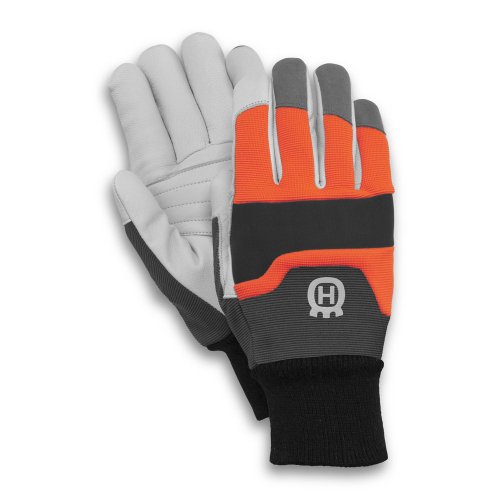Howdy,
In answer to the questions about Rollernose guidebars:
Rollernose bars have a pulley-like nose assembly with the outside sideplates supporting the chain for the turn around the nose, by the bottoms of the sidelinks.
Rollernoses are prefered for contest cutting since they shed sawdust freely without the restriction of the sawdust/chips that are being conveyored between the drivelink tangs jamming into the space between the sprocket teeth. (This is part of the reason spur sprockets on the drive end are better than rim sprockets for contest cutting also).
The bearing capacity of a Rollernose is greater, usually with longer and larger bearings (if the sideplate is cupped) than sprocketnose. These larger bearings were available on the market before the smaller bearings were that sprocketnose bars require. It was the cheap availability of the high precision bearing by Torrington, that made sprocketnose bars feasable. (Early attempts used larger diameter bearings that would spit out of there, and get between the sprocketwheel and the sideplate easily. The bearings were made of "Keewatin" material that proved inferior due to poorer wear resistance also).
Bearing race wear is less in a rollernose, since the fixed race is the Outside diameter of the bearing set rather than the inside as with a sprocketnose, where the inner race has to be much smaller and is the one fixed in place. (And hence subject to wear from the sliding and skewing bearings). Heattreatment of this sprocketnose inner race and race failure due to cracking if over rivetted, is a problem to this day. (Most recently observed on Stihl laminated small bars). It is a never ending problem. You make it hard enough to wear well, and then it splits if you over crush the rivets at rivetting.
The Rollernose bar has lower kickback potential than a sprocketnose bar of the same nose radius. (Because on the sprocketnose the chain is lifted off of the sideplates and only supported in the center, it tips back easily on the sprocketnose, which can cause the depthgauge to plunge or snag into the wood).
Now for the disadvantages!
The nose is laterally weaker. (bends or deflects sideways easily) It is only held in place by that inner laminate "spade" that is only the gauge of groove between the sideplates thick. The sprocketnose has two sideplates riveted to the bar body, and therefore far stronger.
The roller will stick in cold weather, and the chain slide over the sideplates, burning it up promptly.
Arguementably, chain derailing is easier on rollernose bars. (This depends a lot on the design of the sprocket nose you are comparing with!)
There is a "dead spot" between the roller and the bar body that is a no-cut area when limbing. Older designs fought this by extending the bar body right out to the roller edge, but these would hammmer out and chip the rail hardnening badly. Later designs cut the area out for about an inch, making a nasty dead spot, but eleminating the chipping. Attempts to stellite this area failed miserably, since stellite has very poor impact resistance. (It is great against sliding friction only).
Sprocketnose proved cheaper to produce, and rapidly replaced rollernoses, primarily for this cost and ease of production reason. Producing those rollernose sideplates is far more difficult than you would imagine. Depending on design, there is one more part in a rollernose assembly than in a sprocketnose.
Here is a trick for you pro's that occassionally will have a sprocketnose freeze up or jam when you are in the woods, (and up the hill from the truck). Just turn the bar over and force it to run the oposite direction! Usually the nose will come free and with luck, you may be able to finish the day before it grenades on you. After it does, of course, the bearings may jam in the groove of the bar, and they are really difficult to get out of there. Often you have to grind them out to repair.
Regards,
Walt Galer























































